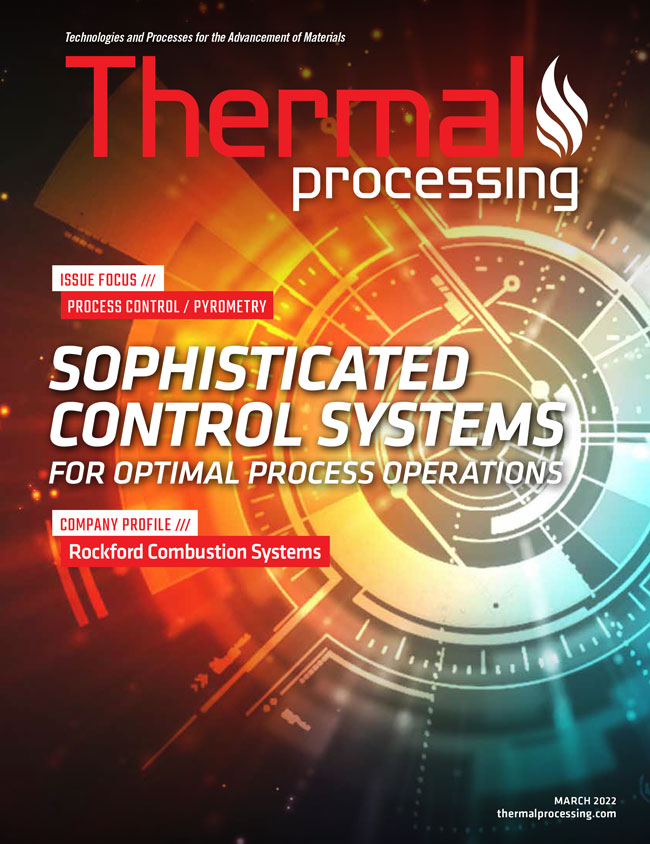
Efficiency. What is it, exactly?
The term “efficiency” refers to the peak level of performance that uses the least amount of input to achieve the highest amount of output. From my perspective and the intent of this article, quality would be the output and the steps taken to improve the efficiency of quality would be the input.
This word, efficiency, is something that often swirls around in my head. I think about it so much that it feels like it owns real estate in my brain. It can be burdensome at times, but it’s part of the job of being a quality director. I have a seemingly never-ending task to make the company’s processes and procedures as efficient as possible.
Has efficiency been something you’ve thought about when it comes to your quality system? Do ideas on how to improve your system to meet the changing landscape of heat treating ever cross your mind? I hope the answer is yes. I would feel a little lonely if I was the only one guilty of having that thought process. I value providing solutions to inefficient processes regardless of complexity. Because of this, I’m constantly seeking ways to make our system function more efficiently. As I mentioned earlier, this can be a burden — but it gives me fulfillment to know I’ve made my system better while making my job easier.
Over the years in this industry, there have been numerous occasions when I saw the opportunity for efficiency improvement — specifically, in areas of procedures, processes, and traceability to name a few. I’d be lying if I said that all efficiency improvements made over the years were based on a proactive approach, because the fact is that sometimes a non-conformance or a customer complaint steers us in that direction. Regardless of the origins for these improvements, all quality representatives should place a high priority on improving efficiency. Whether it is a forced or proactive action, improving your quality system can come from the most likely and unlikely places. Improvements can originate in the form of critical thinking, or they can come from technological advancements that weren’t used or readily available at the time the system was created. Although I could go on for pages on the topic of critical thinking and how to apply it, this article will focus on technology and ways to harness its power to serve your purpose and make your system more efficient.
It should go without saying, but quality has a crucial role in heat treating. From reviewing a standard for compliance to reviewing a heat-treat process for final certification, there are so many ways quality is involved. I’m not ignorant to the fact that some may already use the practices I’ll mention, but some may not and this might be a great opportunity to clean up this part of their operation. I would be here for hours if I listed all the roles quality plays during the heat-treat process, so I will focus on a few key areas where I believe quality representatives can benefit from using technology. Calibration, temperature uniformity surveys (TUS), and system accuracy tests (SATs) are common, so I’ll focus on those.

I know that this is not the case, but let’s assume for the purpose of this article that everyone reading this is a heat-treat supplier of AMS and Nadcap processes. We can start with calibration and TUS in accordance with all the requirements of AMS 2750F. How do you keep track of the scheduled initial or periodic TUS intervals that each furnace requires? I have found that using a Microsoft Excel worksheet can take care of my calibration and TUS scheduling. I am a novice when it comes to Excel, but luckily I have an engineer on my team who is well versed on the functions. After seeing my engineer in action, I was astonished by how powerful and useful it is. The worksheet we created lists all our equipment and has formulas for each depending on its furnace class. After the worksheet was complete, we added a dropdown box to select what month and year it was. Depending on the month and year chosen, the sheet automatically changes and lists each furnace needing calibration or TUS, as well as the required test temperatures for each furnace. It even lists whether the TUS is an initial or periodic. Further, if it was an initial it tells you how many consecutive tests you have performed up to that point. It made this part of my job so much easier. I can now open my Excel sheet, select a month and year, and have my required TUS/calibration schedule for that month — all in less than 10 seconds. That is efficient.
We made a similar sheet for our SATs. But this time our formulas are based on the SAT requirements of AMS 2750F. We include our thermocouple wire correction factors and field test instrument correction factors into our formulas. Of course, this changes every time you calibrate your test instrument or use new wire, so you must be on top of recording those when changed or the sheet will not be accurate. The pass/fail requirements of AMS 2750F are built in as well. This allows us to put the recorded temperature of the furnace and recorded temperature of the field test instrument into our sheet and it does the calculations for us automatically using data from our field test calibration in conjunction with the wire correction factors. After inputting that data, the cells associated with that furnace turn either green or red — green means a passing SAT and red is for a failing test. Simple. No calculations. No going back and forth between calibration certificates and wire certificates. Open your sheet, put the data in, and wait for green or red to show up. Before I took control of quality, this would take around 20 minutes to complete. After we made the sheet, it now takes less than five minutes to complete.
Technology is something ever-present in our daily lives, whether it’s using the handheld minicomputer we call cellphones or using your computer to write a Word document as I am at this moment. We all use technology. I’ve only identified a few ways to use technology to make your quality system more efficient, but there are so many other ways to harness it to your advantage. It’s up to you to determine how it can be helpful.
The takeaway: Technology is everywhere in our daily lives, and it would benefit you to use it often to better serve your quality needs. It will save time and hopefully provide you with peace of mind in certain areas as it has for me.


























